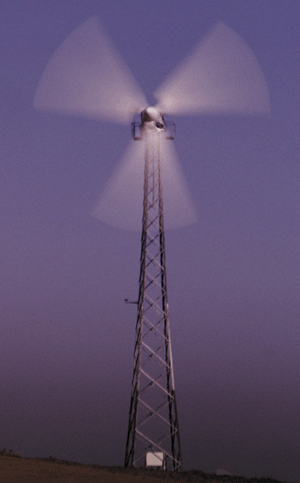Environmental concerns are fuelling the search for alternatives to oil, coal and gas

Satisfying the world’s insatiable appetite for fuel without destroying the environment is the biggest challenge facing the energy industry. World energy consumption is expected to soar by 50% to a staggering 180 000 GW h per year by 2020, with the developing world demanding an ever-increasing share.
Although oil and natural-gas reserves will last for several more decades, environmental concerns are increasingly dominating the agenda. Last year 178 countries agreed to a watered-down version of the original Kyoto protocol, which was designed to reduce the emissions of greenhouse gases from industrialized countries by an average of 5.2% below 1990 levels. Under the new agreement, dubbed “Kyoto lite” by environmentalists, emissions will be cut by just 2%.
The relaxed targets are still not enough to convince the US, the world’s biggest polluter, to sign the Kyoto treaty. Yet within the US, individual states are doing their bit for the environment. California, for example, has set rigid targets for the emission of hydrocarbons, carbon dioxide and nitrogen oxides from new cars and trucks (Green cars move into top gear, page 27 print version). The goals are almost impossible to meet without alternative-fuel vehicles that are powered by fuel cells, batteries or ethanol – rather than petrol – with DaimlerChrysler, Ford and Toyota all playing a role.
Environmental concerns are also driving the search for more energy-efficient lighting for offices and factories, which consumes a massive 15% of electricity in the US (Bright future for efficient lights, page 34 print version only). Physicists are teaming up with lighting companies to find new lamps that emit more light and give off less heat. Light-emitting diodes could lead to electricity savings equivalent to the output of 25 power stations in the US alone if their many technological hurdles can be overcome.
Fuels for the future
Renewable technologies still make up less than 1% of the world’s commercial energy. Photovoltaic solar cells generated their first gigawatt of power just three years ago, which is about the same as the output from a single coal- or gas-fired power station. However, photovoltaic panels are now being manufactured and installed at an escalating rate thanks to new advances in materials. The largest growth is in the “grid-connected market” in which people can generate solar electricity in their own homes and feed any surplus back into the national grid. Indeed, solar power is more likely to flourish as a distributed resource, rather than through massive centralized “solar farms”.
Distributed power is also likely to emerge from the development of fuel cells – devices that convert the chemical energy of hydrogen and oxygen directly into electricity, with only water as a by-product. Although they have previously been used for space and military applications, stacks of fuel cells could replace the internal-combustion engine and central-heating boilers, as well as the batteries in laptop computers and mobile phones (Fuel cells eye up the mainstream market, page 30 print version only).
The move away from carbon-based fossil fuels to hydrogen is also driving the “hydrogen economy” (The hydrogen economy blasts off, page 29 print version). Iceland is leading the way with ambitious plans to remove all fossil-fuel dependency from the country within a generation. As a start, the capital’s fleet of 80 buses will be replaced by vehicles powered by hydrogen fuel cells.
Supporters of renewable energy are fighting claims that the environmental credentials of solar, wind and wave power are less than impeccable. Wind turbines are moving out to sea, partly to avoid being an eyesore (Wind power moves out to sea, page 40 print version only), while the marriage of solar cells and building materials also reduces space requirements. Even the nuclear industry – long viewed as an environmental pariah – is cleaning up its act with new reactor designs that promise, on paper at least, to be safer and cheaper than conventional pressurized-water reactors (New designs on nuclear energy, page 42 print version only).
A longer-term possibility is nuclear fusion. Despite the enormous progress in the performance of experiments over the past 30 years, nuclear fusion is still decades away from generating electricity. Advocates of fusion power claim that it could be a safe and sustainable source of energy that does not produce any greenhouse gases or long-lived nuclear waste. However, physicists have still to demonstrate that the energy produced by the fusion of deuterium and tritium can be sustained. Advances in physics and engineering are making energy from renewable sources increasingly affordable. But political will – as well as scientific progress – is just as crucial for safeguarding the environment for generations to come.






